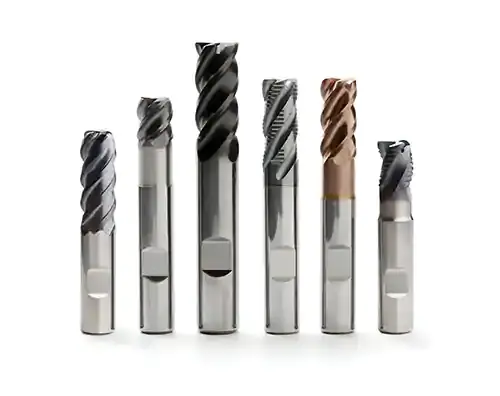Extending the lifespan of your End mills
End mills are one of the most instrumental parts of any CNC machining operation. And while breaking and damaging an end mill may seem inevitable, a good maintenance culture can save your money and time by prolonging the lifespan of your tool. Today, we go over some really important hacks to help you enjoy prolonged usage of your end mill and understand some general tooling requirements that will prevent common mishaps.
1. First the basics – clean your end mills
At the very least, clean your end mills immediately after using them for a machining operation. During milling, your tool comes in contact with various types of materials at different speeds and angles. This means that several minute particles can become stuck between the flutes of your tool. Failure to rid your end mills of these material debris may lead to dulling at the edges and even tool damage. So, as a rule of thumb, ensure that you clean your end mill with the right solution after each stage of machining or at the completion of your project.
2. Select the right tool for the right job
Different jobs require different tools. At times, the same job may have several parts, consisting of composite materials where each selection requires a unique end mill. In order to extend the life of your tool, ensure that you use the right tool that is the best fit for the job requirement. For instance, you should ensure that when selecting your end mills, you pick a tool with the exact or closest length match to the length of cut required only. This is because the longer a tool’s length and length of cut, the more likely it is to break, bend or deflect.
3. Consider coating your end mills
Coatings bring numerous advantages to a CNC milling process. They enhance lubricity, abrasion resistance and slow down wear and tear in the tool. Coating your end mills can add several extra months to its lifespan once done appropriately. However, it is imperative to understand what coating works best with the material to be machined. For instance, end mills with AlTiN coatings may cause chip removal issues because of the likely build-up around the edges that will occur when milling an aluminum part. This is because both the coating and material have a high affinity for one another.
4. Proper tool holding is important
Perhaps one of the most important factors in tool handling, an effective tool holding strategy will not only improve the lifespan of your end mill, it will definitely produce a superior output every time you mill.
Poor tool holding can result in tool run out, material damage, scrapped parts and tool pull out. In other cases, an unexpected tool pull out can result in severe injuries to the operator. If you are to improve safety in your workshop and extend the life of your mill, you will need to work on your tool holding strategy and ensure that it is firmly gripped before any machining begins. As a rule of thumb, the most secure part to hold the tool is between the tool holder and its shank.
5. Run at the right parameters
Feed rates and speeds are the most important parameters when machining any material. This is why most machinist evaluate these right after determining the best tool for their project. To begin with, you should never run your end mill at a speed above what is required. Running your tool too fast may result in ineffective chip removal, tool failure or a below-par chip size. Similarly, running too slow will often cause bad finishes and tool deflection.
A feed rate above what is required will also result in tool breakage and adversely, running below acceptable feed rates will cause excessive heat generation which will lead to tool wear and cutting of chips. Try to use the factory-instructed parameters from your tooling manufacturer. This is because they have considered an array of factors in determining these speed and feed charts. If you feel the need to go higher or lower, feel free to do so within acceptable limits.
The benefits of having end mills with longer lifespan cannot be quantified. From improved quality finishes to accurate milling, machining precision, time and cost savings, consider all of the tips we have shared today and see where you can prolong the lifespan of your tool.
Ensure that you have a good cleaning and maintenance culture. For both safety and longevity factors, consider your tool holding process, coating and lubrication of your end mills. Doing all of the above properly is a certain way that will leave you thankful to add a number of months to the lifespan of your end mill.










